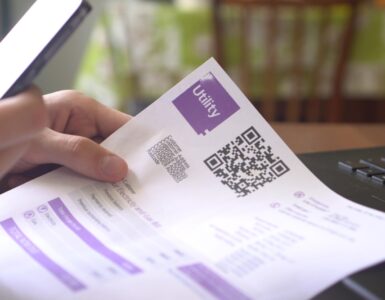The number of fees charged by traditional banks is growing. In 2017 alone, customers paid over $35 billion in bank fees. That includes overdrafts, maintenance and minimum balance fees. On average, account holders pay around $250 each year on bank fees.
Most bank fees can be avoided under certain circumstances. Some might require having more money on your account, while others can only be sidestepped by switching to a different bank. In this article, we talk about five expensive fees most banks charge and how they can be avoided.
Save $200 each year in overdraft fees
Overdraft and Insufficient Funds (NSF) fees happen when customers try to spend more money than what is available in their accounts. For example, if a person has $100 in their account but spends $115 with their debit card, banks will charge a fee to provide the difference.
Overdrafts are among the most expensive fees charged by banks. On average, banks charge between $30 and $35 per overdraft incident. According to the Consumer Financial Protection Bureau, consumers paid over $15 billion in overdraft fees alone during 2017. The Bureau also reported that the average consumer overdrafts their account by $24.
Several bank advocacy groups such as the Consumer Bankers Association have promoted new regulation to control overdraft fees. However, the Federal Reserve already made overdraft fees optional in 2010, which complicates the path to any new regulation.
In general, and since 2010, most banks only charge overdraft fees to customers who have signed up for overdraft protection. Otherwise, their debit card will be declined without generating any fee.
However, some banks still add this service automatically. Because overdraft fees are optional, the best way to avoid them is by not signing up to an overdraft protection program. Consulting banks to make sure such a program is not activated without permission might be necessary.
Some banks offer overdraft lines of credit instead, which charge interest instead of a flat fee. Others will automatically transfer money between accounts to cover the difference. However, this money transfer service can cost $10 per transfer.
Close your account properly and don’t pay while doing it
Opening a checking or savings account in a brick and mortar bank may require a minimum deposit. Some institutions ask for only one dollar, while others have higher minimums. Although the minimum deposit is not a fee, it represents a barrier to open an account. However, online banks now exist and most require no minimum deposit.
Closing an account is a different story. Some banks charge customers an early account closure fee if they close their accounts before a certain period of time has passed. This period can last for a few weeks or several months.
For example, Citibank charges customers a $25 fee if they close their accounts within 90 days of opening it. HSBC and PNC Bank charge customers if the account is closed before 180 days have elapsed.
Odysseas Papadimitrou from CardHub.com explains that most banks establish early account closure fees as a way to discourage account holders from leaving. According to him, customers are less likely to migrate to a different bank after 90 or 180 days. In contrast, Nessa Feddis from the American Bankers Association argues that banks use early account closure fees to recover the cost of opening and closing accounts.
There are two ways customers can avoid an account closure fee. They can keep their accounts open until the minimum period is over, then close it. Or they can look for banks that have no early account closure fees. A potential alternative would be switching to an online bank account.
Get your bank statements online and save money on paper fees
A survey from CreditCards.com revealed that over 54 percent of account holders still receive their statements on paper. Another key finding was that 46 percent would not switch to digital statements even if they were charged a fee.
What they might not know is that most banks already charge a paper statement fee. However, it is not as high as early account closure or overdraft fee, as banks only charge up to $3 each month. For example, U.S. Bank charges $2 per month on some of its checking accounts.
Someone without easy access to online banking might find it okay to pay around $50 annually to receive paper statements. However, low-income families and individuals might want to cut unnecessary spending as much as possible.
Also, as Ms. Feddis reports, most banks use paper statement fees to try and convince customers to switch to digital delivery. Postage prices have gone up in recent years, which means banks have been sending paper statements at a loss.
Another method used by some banks to encourage the switch is offering discounts on account maintenance fees. For example, TD Banks offers a $1 discount to users who have chosen to receive electronic statements through email. The discount applies to all checking, savings and money market accounts offered by the financial institution.
Switching to electronic statements is the most immediate way of avoiding this fee. However, some banks do offer paper statements with no additional cost, though they may require a minimum balance.
Stop paying for account maintenance and save $300
The American Bankers Association estimates that it costs between $250 and $400 each year to maintain a checking account. Most financial institutions fund part of that money by charging customers an account maintenance fee.
For example, Bank of America charges $12 each month on its regular checking accounts. This totals $144 a year, reducing the bank’s maintenance costs by almost fifty percent.
Account maintenance fees vary according to the bank. According to a survey from MoneyRates.com, the average customer pays $13.51 each month in account maintenance fees.
Some customers reported paying as much as $300 a year in such fees. However, the survey also found that almost 32 percent of all checking accounts have no maintenance fees at all.
Choosing a free checking account is one way of avoiding maintenance fees. However, customers who prefer to stick to their bank can avoid the fee by meeting certain requirements.
For example, Bank of America customers can avoid the fee by making a direct deposit of $250 each month or $3,000 per year. They can also waive the fee if their minimum daily balance is above $1,500. Most banks have similar requirements, which can be consulted in the checking account’s policy.
Put some money in your account and avoid a balance fee
Customers with low account balances are often charged more than just account maintenance fees. Most banks also charge a monthly minimum balance fee to customers who fall below certain balance requirements. For example, Citibank charges $15 each month to customers who maintain less than $6,000 in their checking accounts.
Smaller banks often have lower balance requirements and fee amounts. For example, Warren-Boynton State Bank charges $10 unless customers maintain a minimum daily balance of $1,500, or if they average $3,000 during the month.
Some customers often think minimum balance and account maintenance fees are the same. However, a person who owns a checking account can be charged both fees in a month if they fail to make a direct deposit or meet minimum balance requirements.
Minimum balance fees are another method used by banks to recoup some of the costs of maintaining account services. A recent survey by MagnifyMoney showed that median account balance among households was close to $5,000.
It also revealed that almost 29 percent of account holders have less than $1,000 saved. This means a significant number of account owners are subject to minimum balance fees.
There are several ways people can avoid minimum balance fees. First, they can meet their bank’s minimum balance requirements. However, studies have shown that most households struggle to meet those thresholds.
Second, they can switch to a bank that offers more flexible requirements or has no minimum balance fees at all. Online banks are a potential solution, as most charge no maintenance or balance fees.




